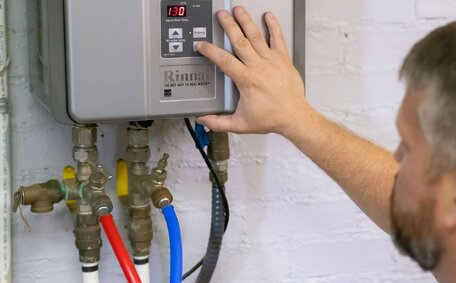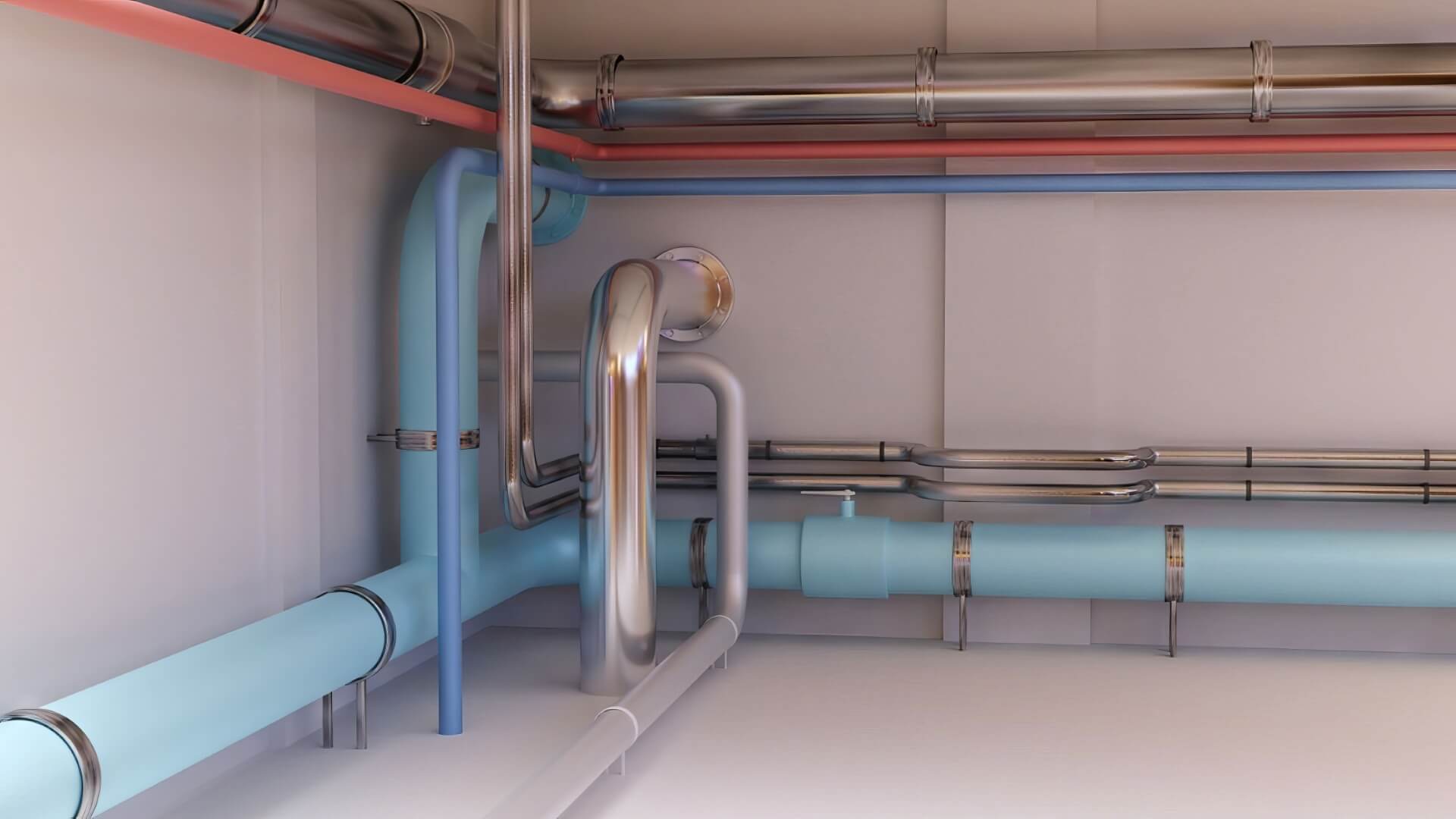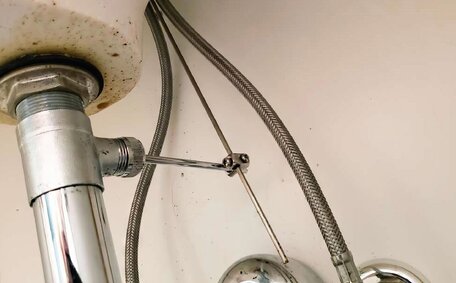Understanding why you need to turn off the water supply
Knowing how to operate your water shutoff valves is a crucial skill for any homeowner. Several circumstances necessitate shutting off the water supply:
- For safe plumbing repairs, such as sealing a leak or installing a new water heater, turning off your water is essential.
- In urgent scenarios such as a burst pipe, swiftly shutting off your water main can prevent deluges and protect your dwelling from harm.
- If you’re planning an absence from your home, it’s prudent to know when you need to turn the mains water supply off as a precaution.
Lack of knowledge about your home’s water shutoff can result in severe outcomes, where a minor leak can escalate into substantial water damage, potentially costing a significant amount if not addressed swiftly.
Being well-informed on how to shut off and maintain your main valve can avert potential issues.
Locating Identifying the shut-off valves for your home
The main shutoff valve, also referred to as the stop valve or isolation valve, is typically found where the water mains enter your home. Your plumber may suggest checking these typical locations for your water shutoff valve:
- Under the kitchen sink or in utility rooms like the laundry - Look for a valve on the cold water line.
- Near gas hot water systems or gas metres - Often there will be a shutoff valve close by to isolate the hot water system.
- Garage or carport - Check near where pipes and wires enter the home.
- Outside near a front boundary tap - There may be an underground stop valve in a concrete box near the property line.
In multi-dwelling units like apartments, locate the main water shutoff valve in the building’s utility room or riser, often near the meter box. Contact your strata or building manager for shutting off main water supply access.
Outdoor stop tap valves housed in boxes typically need a special meter key for operation, available from local water authorities or hardware stores.
Familiarity with the location and operation of your main shutoff valve is key to minimising potential water damage.
Identifying different types of main water valves
Common valve types found in residential properties include:
- Gate Valve - Identified by the wheel handle that must be turned to open and close the valve. It’s critical to know how gate valves should be operated - they must be either fully opened or fully closed.
- Ball Valve - Features a lever handle that rotates 90 degrees to stop water flow. Ball valves are engineered for rapid actions to supply your household or shut the water off.
- Globe Valve - Uses a wheel to adjust water flow and water pressure. Globes valves do not fully shut off.
It’s critical to identify the type of your main water valve to ensure correct shutoff during emergencies. Many valves require only a quarter turn to stop water flow, but it’s important to turn them gently to avoid damaging a compromised valve.
Accessing a difficult to reach or hidden main valve
Locating your inside stop valve can take a moment but is crucial in reducing water damage during emergencies. Here are some tips to improve accessibility to shut off your water valves:
- Remove any obstructions like boxes or furniture from valves, ensuring a minimum 30 cm clearance.
- Install cover plate access panels or removable walls if valves are located behind built-ins or cupboards.
- Enhance your inside valve handles in confined areas with vice grip handles or valve wrenches for better accessibility.
- Attach prominent markers, directional tape, or signs to clearly indicate the location of concealed stop valves.
- Use a valve key extender or spline socket driver for hard to turn valves in tight areas.
- Consult a licenced plumber to relocate or replace unreachable valves during renovations or new builds.
Ensuring main water valves are accessible can prevent costly emergency repairs. Contact us for expert advice. If you question how to manage your shutoff valves, our team is here to help.
Actually turning off the main water supply
After locating the shutoff valve, follow these important steps to turn off the water supply:
- Make sure you have identified the correct valve by tracing the pipe back to confirm it connects to your mains water line.
- Use your hands to gently but firmly carry out the motion in a clockwise direction to turn the valve. Many shutoff valves cut the main water supply with a quarter turn clockwise.
- Turn slowly and evenly without forcing the valve. Forcing can break valves, potentially escalating to significant plumbing issues that may already be stiff or frozen.
- Turn the valve until it stops, which should halt all water flow to your home.
- Turn on a faucet inside to check if water still runs. If it trickles this suggests further turning is needed or there is another valve.
- Once the supply is fully cut, leave the valve closed until you need to turn your water off.
Isolating water flow at the main shutoff valve stops leaks and prevents flooding damage. Contact our team if you have any difficulties turning your home’s main valve on or off.
Turning off water to specific fixtures
Your home may also feature individual isolation valves dedicated to certain fixtures such as sinks, toilets, and showers.
To find them, check beneath and behind appliances or alongside water lines in cupboards. Shutoff valves are often found on fridge water lines, washing machine taps, and dishwasher connections as well.
These fixture-specific valves efficiently isolate water flow similar to the main shut-off. These targeted measures can help you manage your house water flow without affecting the entire residence.
If your fixtures don’t have individual shutoffs, we recommend having isolation valves installed. This approach spares you from shutting off water to your entire home when a single fixture requires repair.
While checking for fixture shutoff valves, also inspect flexible braided supply hoses and connectors. Replacing old or bulging hoses can prevent leaks and burst pipes.
What to do in a plumbing emergency
Knowing how to turn off water swiftly is crucial during plumbing emergencies like burst pipes, preventing catastrophic damage to your home. Here are the steps you should take:
- Stay calm and proceed to shut off the water supply at the shutoff valve if safe to access it.
- Switch off electricity at the mains if water has contacted electrical systems at your property.
- Contain the leak if possible by closing fixture valves or placing a container under the burst pipe.
- Call our team at Glenwood Plumbing on 1300 349 338 for 24/7 emergency assistance.
- If water has flooded rooms, lift or move contents out of the affected area to prevent further damage.
- Open doors and windows to allow ventilation and limit humidity.
- Take photos and videos documenting the damage for insurance purposes.
Call us for professional help quickly, as it’s crucial when facing plumbing emergencies. Attempting DIY repairs could make the situation worse so call us anytime for reliable support.
When you should call a professional plumber
- Major leaks, burst water pipes, or flooding requiring emergency repairs
- No hot water or loss of your main water supply to the entire property
- Faulty appliances like water heaters, toilets or taps needing replacement
- Strange noises from pipes indicating leaks
- Low water flow or pressure issues throughout the house
- Backed up drains or sewer lines
- Gas leaks - extremely dangerous to attempt DIY repairs
- Installing or relocating complex plumbing gas lines
- Small leaks that continue despite DIY attempts
- Assessing health risks from materials like lead pipes or asbestos
Our licenced and insured plumbers are available 24/7, ensuring the job was concluded with precision and safety during plumbing emergencies. Our team serves Glenwood homes and businesses with very professional workmanship and transparent pricing, leaving customers very happy with the results.
Preparing your plumbing before turning water back on
Before restoring water flow after repairs or an extended shutoff, it’s important to take precautions to avoid damage when turning the water back on:
- Make sure all indoor and outdoor taps are turned off completely, focusing on only your water fixtures before engaging the main water valve.
- Initially, open an external hose bib or tap near your meter to expel air and debris from the lines.
- Examine your tankless water heater if you suspect a water leak; units switched off for extended periods may need a reset or reignition as advised by the manufacturer.
- Remove or bypass water filters and softeners which could clog from sediment release.
- Replace flexible appliance supply hoses and fittings if bulging, cracked or previously leaking.
- Inspect pipe connections for leaks as pressure restores, tightening fittings as needed.
Gradually restoring water flow allows pressure to stabilise, avoids air locks, and flushes your plumbing system. Contact Glenwood Plumbing on 1300 349 338 anytime if you need assistance turning water back on or servicing appliances.
Maintaining and inspecting your main shutoff valve
Routine maintenance and checks ensure you can quickly shut off your main water valve to prevent property damage during emergencies. Here are some tips:
- Test your water shutoff at minimum bi-annually by cycling it from closed to open positions. This prevents it from seizing up over time.
- Check for signs of corrosion and replace the valve if necessary. Corrosion can cause valves to fail.
- Inspect for water stains or damp areas indicating leaks. Have any leaks repaired promptly.
- The valve should be easily reachable – practice prompt shutoff, ensure no obstruction, and label it clearly.
- Consider installing a monitored shutoff device which can automatically shut off water in leaks.
- Lubricate the valve with penetrating oil if difficult to operate but do not force.
- If you have galvanised steel pipes, have them inspected as they are prone to build up and corrosion.
A functional main water valve eliminates uncertainty during emergencies, ensuring you have a reliable shutoff. For installations or repairs, contact Glenwood Plumbing for professional help with your shutoff valve.






